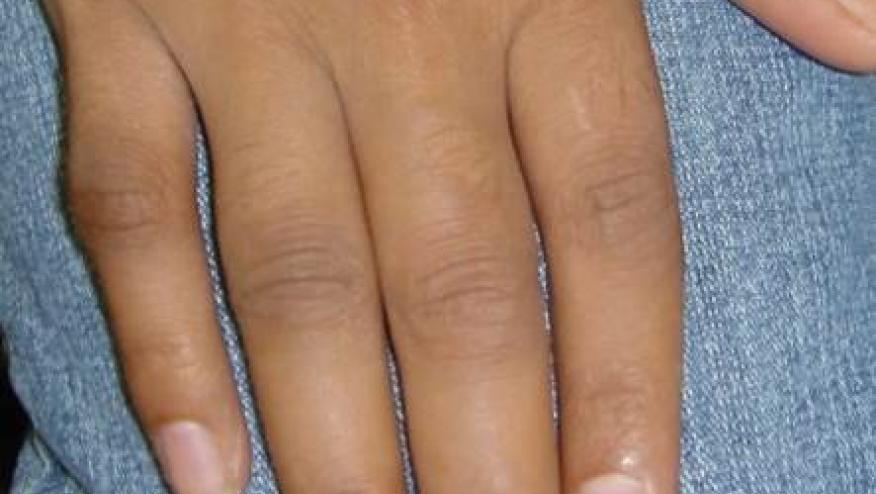Abatacept Efficacy in JIA Save

Subcutaneous abatacept (Orencia) showed efficacy among children with polyarticular juvenile idiopathic arthritis (JIA) in an open-label phase III trial.
At month 4, a 30% improvement on the criteria of the American College of Rheumatology (ACR30) was seen in 83.2% of a group of children ages 6 to 17 years (cohort 1) and in 89.1% of those ages 2 to 5 years (cohort 2), according to Hermine I. Brunner, MD, of Cincinnati Children's Hospital Medical Center, and colleagues.
And at month 24, ACR30 responses were observed in 58% and 100% of patients in cohorts 1 and 2, respectively, the researchers reported online in Arthritis & Rheumatology.
The usual first-line disease-modifying antirheumatic drug treatment in JIA is methotrexate. If disease persists after 3 months, a biologic -- usually a tumor necrosis factor (TNF) inhibitor -- typically is started.
However, multiple treatment options are necessary, as not all patients respond to methotrexate or TNF inhibitors.
Intravenous abatacept has demonstrated efficacy for adult rheumatoid arthritis and for JIA in children ages 6 to 17 years, but the safety and efficacy of the subcutaneous formulation in JIA has not previously been established.
Therefore, the Pediatric Rheumatology International Trials Organization and the Pediatric Rheumatology Collaborative Study Group initiated an international study in 2013, enrolling children with any subtype of polyarticular JIA from 48 centers.
Part 1 of the study consisted of 4 months of open-label abatacept given weekly in a weight-based manner, with children 10 to 25 kg receiving 50 mg, those 25 to 50 kg being given 87.5 mg, and those 50 kg and higher receiving 125 mg.
Part 2 of the study was a 20-month extension using the same dosing regimen for children who were ACR30 responders at month 4.
A total of 173 patients in cohort 1 and 46 in cohort 2 entered part 1 of the study, with 76.3% and 52.2%, respectively, completing the full 24 months.
In cohort 1, median age was 13 years, 79% were female, and median disease duration was 2 years. Median number of active joints was 10, and median number of joints with limited range of motion was eight. Median physician global assessment was 48, and median parental global assessment was 47.8.
In cohort 2, median age was 4 years, 61% were female, and median disease duration was 0.5 years. Number of active and limited joints were seven and eight, respectively, and physician and parent global assessments were 50 and 42.1.
At baseline, 78.6% of those in cohort 1 and 80.4% of those in cohort 2 were receiving methotrexate, while 32.4% and 19.6% were using oral steroids. Prior biologic use was reported in 26.6% and 21.7%.
The median steady state serum trough concentration of abatacept at month 4 was above the target therapeutic level of 10 µg/mL in both groups. For cohort 1, the median trough concentration was 40.5 µg/mL, and for cohort 2, the median concentration was 51.2 µg/mL.
Clinical improvements were apparent in both groups by month 1, increasing through month 21, the investigators noted.
More stringent improvements of 50%, 70%, 90%, and 100% responses at month 4 were observed in 72.8%, 52.6%, 28.3%, and 14.5% of cohort 1, and in 84.8%, 73.9%, 58.7%, and 41.3% of cohort 2, respectively. By month 24, low disease activity was observed in 42.8% and 90.9% of the two groups.
With regard to safety, serious adverse events were reported in 8.1% of cohort 1 and in 6.5% of cohort 2, with two events being considered related to treatment (one sepsis, one overdose). In cohort 1 there also was one malignancy considered unrelated, and three autoimmune disorders, also considered unrelated.
Infections occurred in 68.2% of patients in cohort 1 and in 78.3% of those in cohort 2. These rates were higher than what has been seen among adults with rheumatoid arthritis receiving abatacept, but this finding was expected because of the recognized greater susceptibility of children to infection, the authors noted.
Injection site reactions were observed in 6.9% and 4.3% of cohorts 1 and 2, respectively. Most were mild.
Antibodies to abatacept developed in 2.3% and 8.7% of patients in cohorts 1 and 2, respectively, but were transient and did not appear to affect efficacy or safety.
Abatacept is not commonly used early in the course of JIA treatment. However, "the results from cohort 2 reported here, in which abatacept treatment was initiated in patients with a median disease duration of only 0.5 years, provide valuable data on the early introduction of abatacept; notably, JIA-ACR response rates were consistently higher in cohort 2 than in cohort 1," Brunner and colleagues wrote.
A limitation of the study was its open-label design.










If you are a health practitioner, you may Login/Register to comment.
Due to the nature of these comment forums, only health practitioners are allowed to comment at this time.